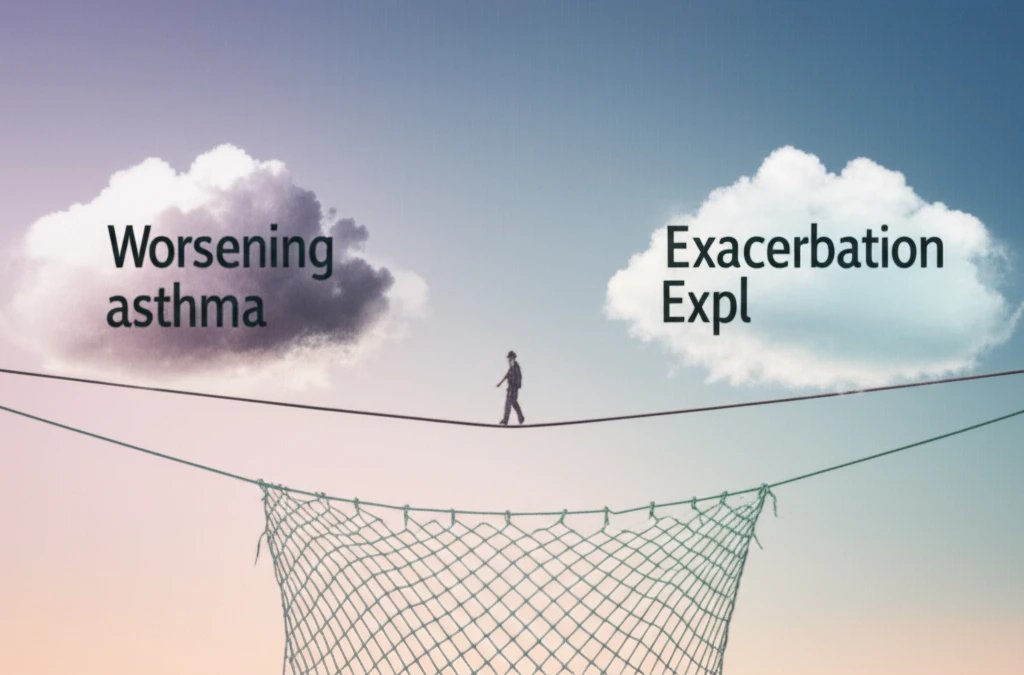
Asthma Flare-Up or Exacerbation? How to Tell the Difference and Get the Right Treatment
"Understanding the nuances between worsening asthma and a full-blown exacerbation can help you take control of your respiratory health and prevent emergencies."
Asthma exacerbations are like unwelcome guests that can significantly impact your life, marking increased disease risk and the necessity for intensified therapy. The frequency of these exacerbations, especially those severe enough to require emergency room visits or hospitalization, serves as a key indicator of risk and a measure of how well your asthma treatment is working. When combined with symptom tracking and quality of life assessments, exacerbations become a focal point in determining the overall control of your asthma.
Preventing future flare-ups is a primary goal of asthma management. Asthma exacerbations also serve as a critical measure in asthma intervention studies. They represent significant risks to patients, causing anxiety, stress on healthcare systems, and potentially leading to chronic irreversible airflow obstruction. Given their major role, having a clear and consistent definition of what constitutes an asthma exacerbation is essential for effective treatment and improved outcomes.
While asthma exacerbations are often described as 'episodic flare-ups' that can be life-threatening and carry a substantial burden, defining them precisely has proven challenging. A recent expert group organized by the National Institutes of Health (NIH) suggested defining asthma exacerbations as a worsening of asthma symptoms requiring the use of oral corticosteroids to prevent a serious outcome.
Worsening Asthma vs. Exacerbation: Spotting the Key Differences

It is important to distinguish between poorly controlled asthma and a true exacerbation. Global Initiative for Asthma (GINA) includes symptoms like shortness of breath, wheezing, cough, and chest tightness as exacerbation criteria, along with a decline in lung function. However, this inclusion of symptoms can blur the lines between simply worsening asthma and a full-blown exacerbation.
- Increased frequency of symptoms such as wheezing, coughing, or shortness of breath.
- A noticeable decrease in peak expiratory flow (PEF).
- Greater reliance on rescue medications like albuterol.
- Changes in lung function.
Take Control of Your Asthma: Prevention and Action
Recognizing the difference between worsening asthma and an exacerbation is crucial for effective management. The authors suggest that an increase in clinical symptoms and/or a need for reliever therapy indicates worsening asthma, presenting a window of opportunity for intervention.
Using symptom and reliever criteria in defining asthma worsening enables focused study of interventions. These may include adjusting the use of beta-agonists, inhaled corticosteroids, or adding other medications. This proactive approach aims to prevent progression to severe exacerbations.
By establishing a clear, standardized definition of asthma worsenings and exacerbations, healthcare professionals and patients can better navigate treatment plans and improve overall outcomes. Clear criteria, such as initiating systemic corticosteroids or needing emergency care, help distinguish exacerbations. A unified definition promotes more effective research and better care for all asthma patients.
